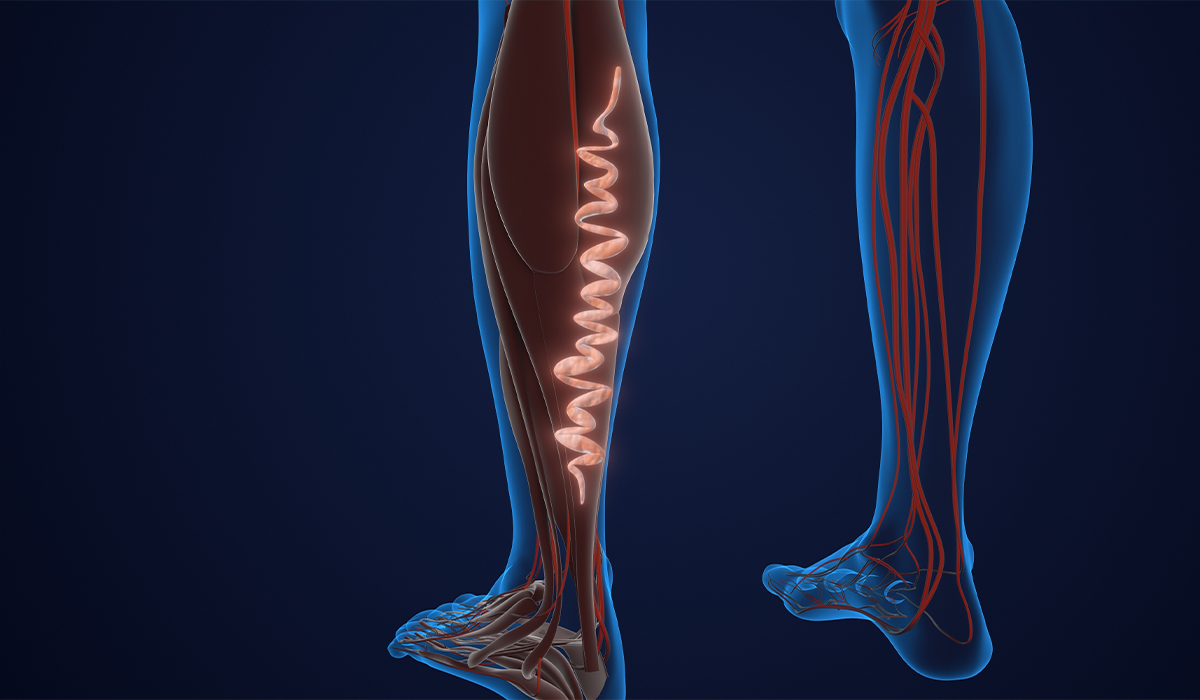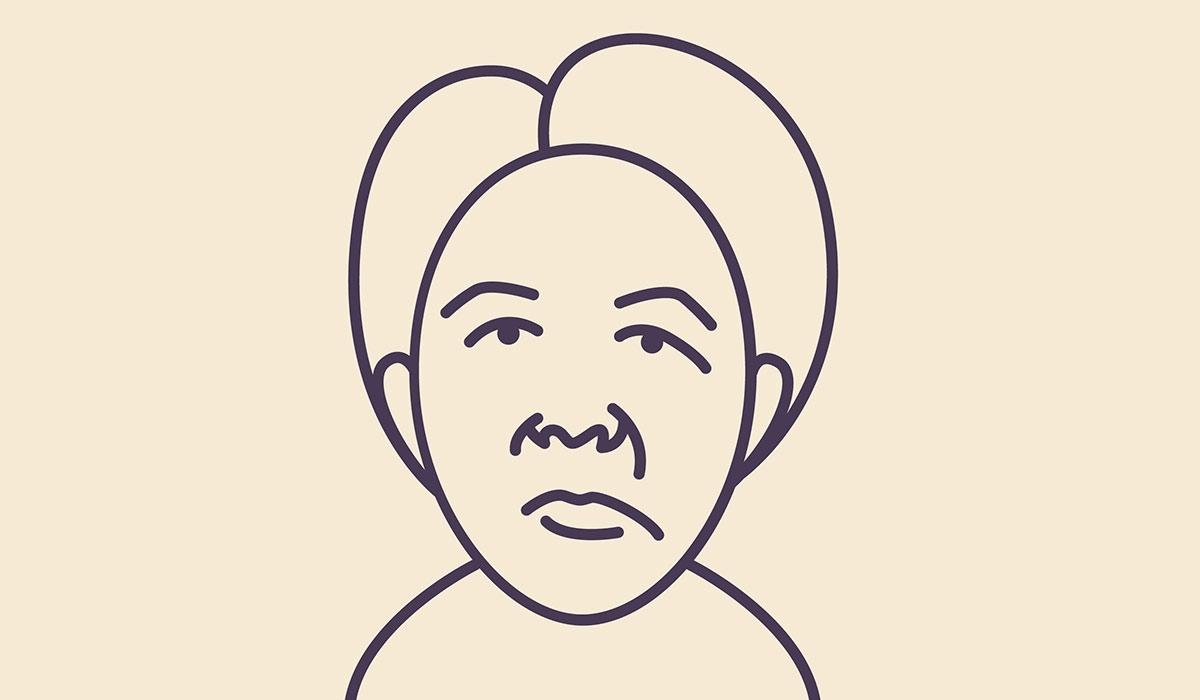Hydrocephalus affects people of all age groups. It can develop at birth due to numerous factors, including genetics and pregnancy complications, or after birth, due to such reasons as trauma, diseases, infections, stroke, and tumors.
There are many symptoms associated with hydrocephalus, but the most common ones are nausea, vomiting, tiredness, irritability, and headaches. The symptoms you may develop because of hydrocephalus depend on its type, causes, and severity.
What is Cerebrospinal Fluid (CSF)?
Cerebrospinal fluid may cause hydrocephalus to develop in the brain. But what exactly is CSF? Cerebrospinal fluid is a clear, colorless, and watery fluid that flows in the spinal cord and brain, which make up the central nervous system. Its roles are vast and spread throughout the whole human body. It controls breathing, moving, thinking, and many more processes. Cerebrospinal fluid also serves as a shock absorber and provides immunological protection for the brain.
How Common is Hydrocephalus?
Hydrocephalus affects people regardless of age: infants, toddlers, teenagers, adults, and older adults. According to the Hydrocephalus Association, there are currently one million people in the United States living with this condition, and 1 out of 770 babies develop it each year.
Normal pressure hydrocephalus (NPH) is usually observed in older adults (aged 60 and over). According to one study, 800,000 older Americans suffer from NPH. However, as much as 80% of all cases are estimated to remain undiagnosed, so NPH may be more common than we think.
Types of Hydrocephalus
Doctors usually classify hydrocephalus into six types: non-communicating, communicating, ex-vacuo, normal pressure, acquired, and congenital hydrocephalus.
Non-communicating (Obstructive) Hydrocephalus
Non-communicating hydrocephalus, also known as obstructive hydrocephalus, occurs when the flow of cerebrospinal fluid is blocked along the passages that connect ventricles in the brain. This leads to an increased pressure inside the skull.
Communicating Hydrocephalus
Communicating hydrocephalus occurs when the flow of cerebrospinal fluid is blocked after it exits the ventricles. Although CFS can still travel between the ventricles (hence the name ‘communicating’), this type of hydrocephalus may result in the thickening of membranes at the base of the brain.
Hydrocephalus Ex-vacuo
This type of hydrocephalus occurs due to brain damage, which a stroke can cause, Alzheimer’s disease, or an injury to the head. It may cause shrinking of the brain tissue around the ventricles.
Normal Pressure Hydrocephalus
Normal pressure hydrocephalus (NPH) happens when the build-up of cerebrospinal fluid results in enlarged ventricles. However, unlike other types of hydrocephalus, NPH does not increase pressure. The build-up of cerebrospinal fluid is usually slow, so symptoms develop gradually rather than appear suddenly.
Normal pressure hydrocephalus affects people who are over 50 years old and usually develops after an infection, stroke, hemorrhage, surgery, or injury. It is estimated that 375,000 older Americans have this type of hydrocephalus.
Acquired Hydrocephalus
If you have acquired hydrocephalus, it means that you developed it after birth. This type can occur due to the following factors:
- Severe head injury
- Brain tumor
- Stroke
- Meningitis
- Intraventricular hemorrhage (brain bleed)
- Diseases
Congenital Hydrocephalus
Congenital Hydrocephalus is a type of hydrocephalus that is present at birth. It can be caused by:
- Genetic abnormalities
- Infections during pregnancy (e.g., rubella, mumps)
- Premature birth complications
- Brain and spinal cord defects (e.g., spina bifida)
Congenital hydrocephalus is one of the most common developmental anomalies of the central nervous system, affecting 1 in every 500 babies in the USA each year.
Risk Factors
Although the causes of hydrocephalus are not fully understood, some factors have been linked to an increased risk of this condition. In newborns, the following developmental issues and medical conditions contribute to hydrocephalus:
- Bleeding within the ventricles: Intraventricular hemorrhage (IVH), or bleeding within the ventricles, is a complication of premature birth that may trigger hydrocephalus.
- Uterus infection: One of the problems that may occur during pregnancy is infection in the uterus. It increases the risk that a newborn will be affected by hydrocephalus. Examples of bacteria that may cause uterus infection include rubella and syphilis.
- Development issues: Hydrocephalus is more likely to occur if the central nervous system does not develop correctly in a fetus. For example, it can be triggered if the flow of cerebrospinal fluid is blocked.
Factors that increase the risk of hydrocephalus in all age groups include:
- Spinal cord or brain tumors and lesions
- Traumatic injury to the brain
- Bleeding in the brain
- Nervous system infections (e.g., bacterial meningitis or mumps)
Signs And Symptoms
Hydrocephalus causes different symptoms depending on age and whether it is present during or after birth.
Symptoms of Congenital Hydrocephalus
Hydrocephalus that is present at birth is linked to the following symptoms:
- Difficulty breathing
- Seizures
- Vomiting
- Drowsiness
- Irritability
- Head larger than it should be
- Difficulty feeding
- Delayed developmental stages, such as sitting or crawling
- Stiff arm and leg muscles
- High-pitched cry
- Arm and leg muscles prone to contractions
- Visible veins on the scalp
- Shiny and thin scalp
- Reluctance to move the neck or head
Symptoms of Acquired Hydrocephalus
Hydrocephalus that develops after birth may cause these symptoms:
- Vomiting
- Seizures
- Angry fits
- Irritability that gets worse
- Changes in personality
- Difficulty walking
- Nausea
- Lack of appetite
- Double vision
- Blurred vision
- Drowsiness
- Headaches
- Confusion
- In rare cases, bowel incontinence
Symptoms in Infants
Symptoms that are often observed in infants include:
- Unusually large head
- Drowsiness
- Vomiting
- Fontanel (soft spot) on an infant’s head
- Downward gaze (sun-setting eyes)
- Seizures
- Angry fits
- Reluctance to be fed
- Low muscle strength
Symptoms in Toddlers and Older Children
In toddlers and older children, these symptoms are most likely to appear:
- Headaches
- Vomiting
- Nausea
- Extreme drowsiness
- Loss of bladder control
- Difficulty concentrating
- Changes in personality
- Muscle spasms
- Seizures
- Difficulty waking up, staying awake, or both
- Loss of coordination
- Developmental delays
Symptoms in Adults
Symptoms in adults usually include:
- Frequent headaches
- Trouble walking
- Memory problems
- Difficulty concentrating
- Loss of coordination
- Tiredness
- Nausea
- Vomiting
- Changes in vision
Symptoms in Older Adults
Older adults and elderly affected by hydrocephalus are likely to develop the following health problems:
- Benign dementia
- Memory problems
- Loss of bladder control
- Difficulty walking

Complications
Mild hydrocephalus rarely leads to complications, and that risk is even lower if it is treated. Possible complications linked to more serious cases include developmental delays and physical and learning disabilities. In the most severe cases, hydrocephalus may result in death.
Diagnosis And Tests
Doctors usually diagnose hydrocephalus based on physical examination, medical and family history, and exams, including MRI, CT Scan, and ultrasound.
During the physical examination, your healthcare professional will look for common symptoms of hydrocephalus, such as slow reflexes, sunken eyes, or an unusually large head. If you are an adult, you will be asked if you experience frequent headaches, vomiting, nausea, and difficulty walking, among other symptoms.
After the initial assessment, a doctor may order the following tests to confirm the diagnosis:
- MRI: Magnetic resonance imaging (MRI) scan produces detailed brain images using magnetic field and radio waves. If your ventricles are enlarged because of excessive cerebrospinal fluid, it will be visible on your MRI results.
- CT Scan: A computerized tomography (CT) scan is a quick and painless test similar to MRI technology. This test can also show enlarged brain ventricles but is less detailed than MRI.
- Ultrasound: Ultrasound test is often recommended for infants. In this exam, an ultrasound device is placed on top of an infant’s head to create images of the brain.
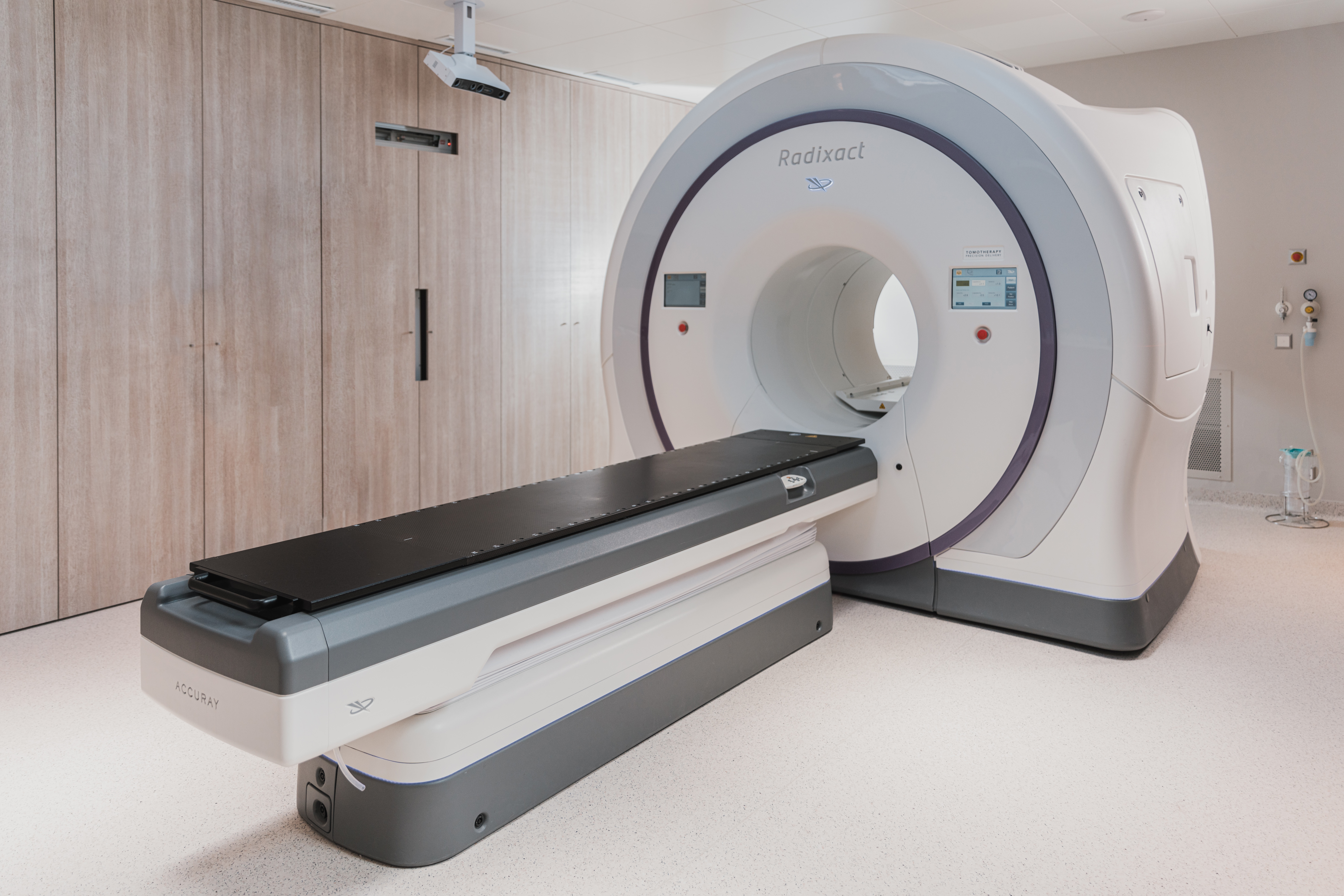
Treatment
Treatment for hydrocephalus depends on whether you have congenital and acquired hydrocephalus or normal pressure hydrocephalus. Treatment options for congenital and acquired hydrocephalus are as follows:
Shunt insertion: Shunt insertion is when a healthcare professional places a catheter (a thin, flexible tube) in the brain to drain the excess cerebrospinal fluid into a different part of the body, such as the heart’s chamber, chest, or abdominal cavity.
Shunt insertion is usually permanent and requires regular monitoring to ensure it does not result in any health problems. This method successfully treats hydrocephalus in most patients, and no other procedures are needed.
Ventriculostomy: An alternative solution to shunt insertion is ventriculostomy. In this procedure, a surgeon makes a hole in the brain verticle or between the verticles to make the excess cerebrospinal fluid flow to the base of the brain.
Although shunts may also treat normal pressure hydrocephalus, they do not work for everyone. In such cases, an abnormal build-up of cerebrospinal fluid can be removed with a lumbar puncture, which removes some of the fluid from the base of the spine.
Treatment Complications
Many patients don’t develop complications due to treatment or develop them many years afterward. Patients with regular medical check-ups after shunt insertion have a lower risk of complications. However, things can change quickly if shunts become infected, fail, or break. In such scenarios, another brain procedure is required.
Symptoms that may develop after shunt failure include:
- Nausea
- Vomiting
- Tiredness
- Drowsiness
- Headaches
- Changes in vision
- Mild fever
- Seizures
- Redness at the shunt area
- Sore neck and shoulder muscles
If you had shunt insertion and experienced the above symptoms, contact your healthcare provider as soon as possible to address the problem.
Prognosis for Hydrocephalus Patients
The prognosis for hydrocephalus depends on several factors, including the time you or your child receives treatment, the type and causes of hydrocephalus, the severity of symptoms, and age. Some people respond very well to available treatment options and recover quickly, while others, who often suffer from severe hydrocephalus, do not show a quick improvement.
In many cases, the earlier hydrocephalus is diagnosed and treated, the better the outlook. However, predicting how a given individual will respond to treatment is challenging, as each case is unique.
How to Prevent Hydrocephalus?
Preventing the development of hydrocephalus may not be possible in some cases. However, there are some general measures and precautions that can be taken to reduce the risk of certain types of hydrocephalus:
- Genetic counseling: If there is a family history of congenital hydrocephalus or other genetic conditions that may increase the risk, genetic counseling can provide information and guidance for individuals or couples considering starting a family.
- Infection prevention: Taking steps to prevent infections, especially during pregnancy, can reduce the risk of certain types of hydrocephalus. This includes practicing good hygiene, getting vaccinated as recommended, and avoiding contact with individuals who have contagious illnesses.
- Prenatal care: Avoiding alcohol, tobacco, and illicit drugs during pregnancy can contribute to the overall well-being of the baby.
- Trauma prevention: Taking precautions to prevent head injuries can help reduce the risk of acquired hydrocephalus. This includes wearing helmets during biking, skating, or playing contact sports.
- Treatment of tumors: Early and appropriate treatment of tumors that could potentially lead to hydrocephalus is vital. Seeking medical attention for any persistent symptoms or health concerns related to tumors can reduce the risk of acquired hydrocephalus.
Hydrocephalus – Key Facts You Should Know
Hydrocephalus is a neurological condition characterized by cerebrospinal fluid (CSF) build-up within the brain’s ventricles, leading to increased pressure in the skull. It can occur at birth due to various factors, including genetics and pregnancy complications, or develop later in life due to trauma, diseases, infections, stroke, or tumors.
Hydrocephalus affects individuals of all ages, with approximately one million people in the United States living with the condition and 1 in 770 babies developing it each year.
Risk factors for hydrocephalus include bleeding within the ventricles, uterine infections during pregnancy, developmental issues, spinal cord or brain tumors, traumatic brain injury, bleeding in the brain, and nervous system infections.
Diagnosis involves a physical examination, medical history review, and exams such as MRI, CT scans, and ultrasound. Treatment options depend on the type of hydrocephalus and may include shunt insertion or ventriculostomy to drain excess CSF.
Prevention strategies include genetic counseling, infection prevention, prenatal care, and trauma prevention. Early and appropriate treatment of conditions like tumors is crucial in reducing the risk of acquired hydrocephalus.
The prognosis for hydrocephalus varies based on factors like the timing of treatment, the type and causes of hydrocephalus, and the severity of symptoms. Early diagnosis and treatment generally lead to better outcomes, but individual responses to treatment can vary.
Sources
- Advanced Neurosurgery Associates. Types of Hydrocephalus.
https://ana-neurosurgery.com/hydrocephalus/different-types/ - Hydrocephalus Association. (2023). About Hydrocephalus.
https://www.hydroassoc.org/about-hydrocephalus/ - NIH. (2023). Hydrocephalus.
https://www.ninds.nih.gov/health-information/disorders/hydrocephalus#:~:text=Hydrocephalus%20is%20a%20neurological%20disorder,pressure%20on%20the%20brain’s%20tissues - NIH. (2023). Hydrocephalus.
https://www.ncbi.nlm.nih.gov/books/NBK560875/ - NHS. (2023). Hydrocephalus.
https://www.nhs.uk/conditions/hydrocephalus/
- Hydrocephalus: What Is, Types, Symptoms, Diagnosis, and Treatment
- What Is Hydrocephalus?
- What is Cerebrospinal Fluid (CSF)?
- How Common is Hydrocephalus?
- Types of Hydrocephalus
- Risk Factors
- Signs And Symptoms
- Diagnosis And Tests
- Treatment
- Prognosis for Hydrocephalus Patients
- How to Prevent Hydrocephalus?
- Hydrocephalus – Key Facts You Should Know
